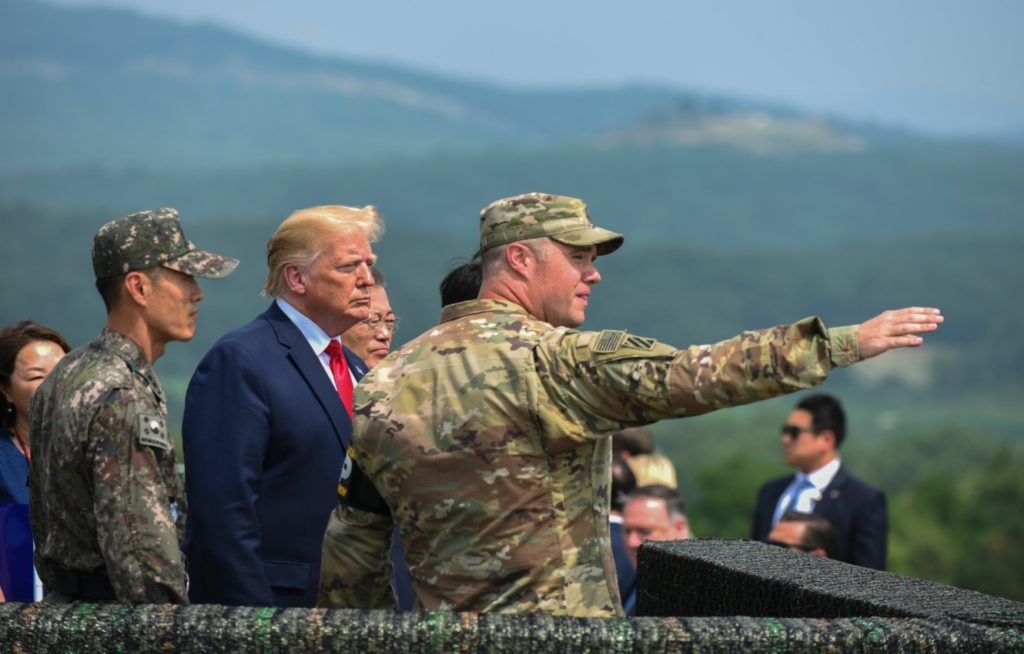Confronting Reality: The Bitter Medicine That North Korea Policy Needs Now

My entire career, I’ve watched policy officials make the well-intentioned choice to seek North Korean denuclearization. In the early 2000s, it was a smart and necessary goal. A nuclear North Korea would imperil U.S. allies, spread nuclear weapons beyond the Korean Peninsula, damage the sanctity of the nuclear taboo, and eventually threaten U.S. territory.
Unfortunately, as the saying goes, the enemy gets a vote. North Korea has repeatedly stated it will not entertain “unilateral nuclear abandonment,” and that denuclearization requires “the removal of all sources of nuclear threat, not only from the North and the South but also from all neighboring areas targeting the Korean Peninsula … completely eliminating the U.S. nuclear threat to Korea before it can eliminate our nuclear deterrent.” Short of resorting to military force, there is nothing the United States can do to eliminate North Korea’s nuclear weapons for the foreseeable future.
In a recent report with the Center for a New American Security, I therefore propose redesigning Washington’s North Korea policy to acknowledge that the underlying premise of America’s longstanding approach has been overtaken by events. The assumption that the United States can convince North Korea to denuclearize is not only incorrect; it leads to coercive policies that increase the risk of nuclear conflict. As I recount at length in On the Brink: Trump, Kim, and the Threat of Nuclear War, the goal of denuclearization justified a maximum pressure approach to North Korea in 2017, and maximum pressure played a leading role in causing the nuclear crisis. Rather than dial back a quixotic goal, the Trump administration ratcheted up the means employed and the risks taken to realize it. The nuclear confrontation might have been avoided entirely if the United States had more realistic expectations for what could have been achieved with North Korea.
To better manage the risks of nuclear instability in Korea, the report urges policymakers to stop treating denuclearization as a realistic planning factor and instead pursue an arms control approach that prescribes for the United States a series of unpalatable but essential actions. I was among the first to publicly urge an arms control approach with North Korea in lieu of denuclearization years ago — and have since been joined by other prominent nuclear analysts. But as far as I’m aware, this report is the first attempt to translate what such a shift should mean for U.S. North Korea policy in detail.
Some of the actions proposed are unilateral. The White House, for example, should issue an executive order requiring a presidential decision before deploying nuclear-capable assets to the Korean Peninsula. The Office of the Secretary of Defense should modernize U.S. force posture in South Korea in a manner that would gradually reduce troop presence, but in the name of deterrence. And the United States should pursue broad-based engagement with North Korea’s national security elites — not just its Foreign Ministry — wherever it can.
Initiatives like these, and others detailed in the report, change the overall context of U.S.-North Korea relations in a manner favorable to productive negotiations. More importantly, such unilateral actions are in the U.S. interest because they enhance nuclear stability on the Korean Peninsula by helping manage risks of inadvertent nuclear use.
Other prescriptions in the report are reciprocal but significantly scale back what the United States should be seeking from North Korea and when it should be seeking it. For instance, a declaration of North Korean nuclear inventory is a necessary early step in denuclearization. The U.S. demand that North Korea provide such a declaration during the Trump-Kim summit in Hanoi in February even contributed to the failure of that meeting. But in an arms control process, a nuclear declaration can wait until both sides have established a track record of mutual accommodation and confidence-building.
And while North Korea’s development of an intercontinental ballistic missile directly threatens the U.S. homeland, there are strategic advantages to prioritizing short- and medium-range missile system reductions in nuclear negotiations. North Korea’s long-range arsenal is far less reliable than its shorter-range systems, making it a less immediate threat. It is also symbolically important to the Kim regime. Regional weapons, not the intercontinental ballistic missile, most directly threaten U.S. allies Japan and South Korea and have less symbolic importance to North Korea, making them relatively more negotiable. Focusing on short- and medium-range systems reduction is therefore both higher reward for the United States and less provocative to North Korea.
The above recommendations, and many others in the report, amount to bitter medicine for the United States because, in any previous era, they would have been tantamount to giving up or “losing” on North Korea. But if eliminating North Korea’s nuclear and missile arsenal is the ultimate benchmark for success, then the United States lost as early as 2006, when North Korea first detonated a nuclear device. What I prescribe takes a clear-eyed view of what has the best chance of working. Only through a more realistic North Korea policy can the United States do what matters most — manage the risks of nuclear and conventional war.
Van Jackson hosts The Un-Diplomatic Podcast and is the author of On the Brink: Trump, Kim, and the Threat of Nuclear War (Cambridge University Press, 2018). He is a Senior Lecturer in international relations at Victoria University of Wellington, and an Adjunct Senior Fellow at the Center for a New American Security. He is also a War on the Rocks Senior Editor and an Associate Editor at the Texas National Security Review.
Image: U.S. Army (Photo by Staff Sgt. Joel Salgado)

